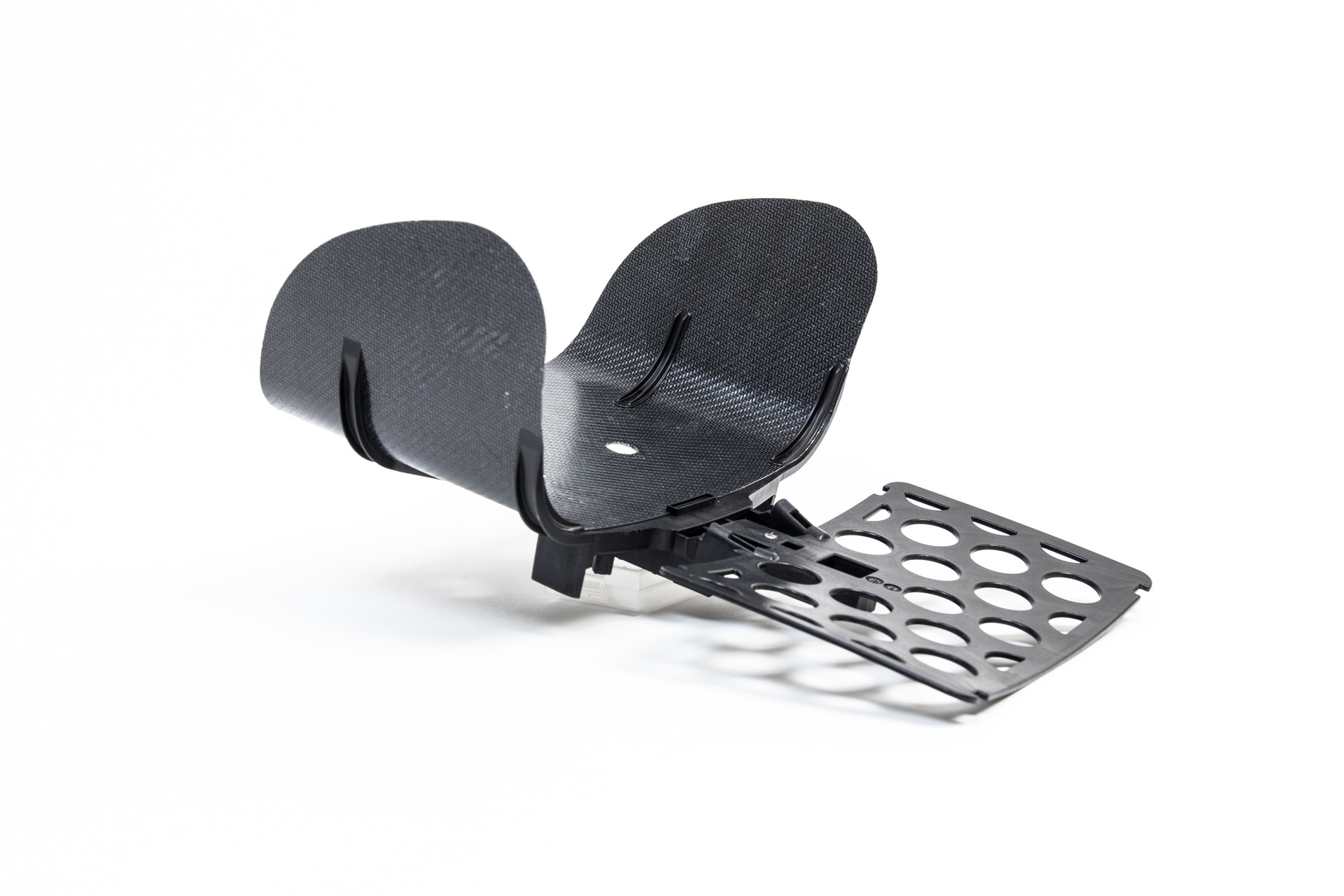
Lanxess says that its Tepex continuous fiber reinforced thermoplastic materials has been used to build a demonstrator child seat headrest.
The insert component is produced in a particle-foam composite injection molding (PCIM) process, and to reinforce the headrest in individual places and reduce weight, the manufacturers used a customized insert made of Tepex dynalite 104-FG290(4)/47%, a polypropylene-based composite material strengthened with two layers of continuous glass fiber rovings. The insert is formed in a single process operation using an injection molding tool with turning plate and back-injected with a short glass fiber reinforced polypropylene compound to integrate the support structure for the headrest and backrest. The prefabricated insert is then back-foamed in a second tool using particle foam based on expanded polypropylene (EPP).
‘Not only is the new, highly integrated production process more energy-efficient than the previous procedure, it also results directly in the finished component,’ said Norbert Schramm, scientific assistant at the Chemnitz University of Technology which partnered Lanxess in the project. ‘This reduces the total number of parts from six to one, which also lowers production costs in terms of logistics and the machine expenditure required. If a reinforcement based on carbon fibers is used in the composite semi-finished product and in the injection molding material, the result is an assembly that is almost 30% lighter.’
The company said that it developed the demonstrator component as part of a research project funded by the German Federal Ministry for Economic Affairs and Energy as part of the Central Innovation Programme for Small and Medium-Sized Enterprises (SMEs).
This story uses material from Lanxess, with editorial changes made by Materials Today. The views expressed in this article do not necessarily represent those of Elsevier.




